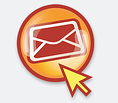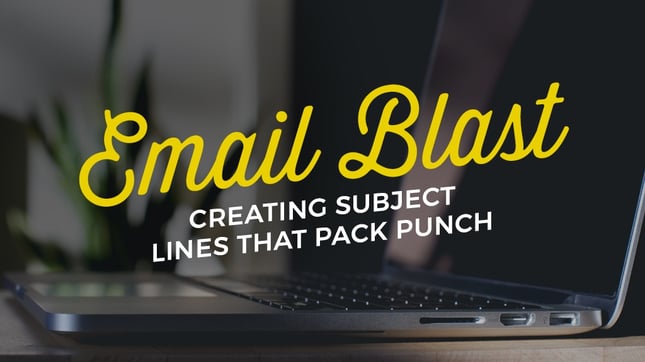 Guest column by Ryan Pinkham, Engagement Marketing
Guest column by Ryan Pinkham, Engagement Marketing
Engagement marketing is a lot about relationships.
Your current customers are the lifeblood of your business. These are people who know you, the products and services you provide, and who return week after week and month after month to see you again.
Your current customers are also your best source of new business—especially those who you’ve built a relationship with in the past.
That’s because when you build a relationship with your target audience, they’ll not only be more likely to do business with you again, but will also feel more comfortable referring you to a friend, family member, or colleague.
Email marketing is a powerful tool in your toolbox for building those relationships online.
[Ed: The email marketing software we use at Do It! Marketing is Constant Contact. Click here for a 60-day free trial.]
By connecting with customers in their inbox each month, you’ll stay top of mind with your target audience. And by delivering content they enjoy, can use, and want to engage with, you’ll build trust with the people who already know you best.
Here are 10 tips for building long lasting email marketing relationships:
1. Get to know each other before things get serious
You should never start any relationship until you really get to know each other. You may think that you know your customers, you might even see them every day, but until they are comfortable enough to share their email address with you, don’t assume anything.
That doesn’t mean you shouldn’t ask. Having a sign-up sheet at your business or a Join My Mailing List feature on your website or Facebook Page is a great way to start things off.
2. Make sure you have something in common
Without common interests, your relationship is never going to work. If someone has signed up for your email newsletter, that means you have at least something in common, but you have to make sure the content of your emails remains relevant to keep the relationship going long term.
Keep an eye on whose reading and who’s opting out. It’s a good way to see who’s engaging with your content and who is not. Just keep in mind, sometimes it’s just not meant to be and it might not always be your fault.
3. Don’t take them for granted
Your customers should be the most important thing to you … or at least to your business. They aren’t just names on a list; they are people who want to be appreciated. Once your subscribers start to feel like they aren’t being valued, they’ll be packing their bags.
Show that you appreciate them by getting exclusive with content, whether that’s an informative article or a coupon. Also keep an eye on how often you’re sending emails. Be careful not to smother your list by overloading their inbox—remember, sometimes less really is more.
4. Be yourself
Think of every newsletter as a first date. It’s your chance to make a first impression and to show your list what you’re all about. You already know they’re interested, they said “yes” to joining your list, didn’t they? Be confident. Don’t be afraid to have fun with it.
5. Make sure your signals are getting through
Your relationship’s not going to go anywhere if your signals are getting lost in translation. When you get someone’s number for the first time, you better make sure you get all the digits, right?
It’s the same thing with your emails, make sure your recipients have an easy way of giving you accurate contact information so your messages get to where they are meant to go.
6. Earn their trust
Trust. It’s the most important part of any relationship. The best way to prove your customers can trust you is by showing them you can keep a secret. That means never EVER sharing your customer’s contact information with someone else. They trust you to protect their email addresses and once you break that trust, it’s tough to get it back.
7. Set realistic expectations
A great way to set expectations for your customers is by sending a welcome email. It helps make a good first impression and gives you a chance to show your intentions. Just don’t make promises you can’t keep. If your newsletter is going to be a monthly newsletter, it needs to be a monthly newsletter.
8. Dress the part
This should be an easy one. All you need to do is find the best “clothing” store for email newsletters.
Constant Contact has plenty of outfits to fit any business or organization and they’re easy to customize to fit the look and feel of your brand. Not only that, it's easy for you to use the same template for each of your newsletters. That way you don’t have to worry about showing up wearing two different colored socks.
9. Be responsive
Just because you’re the one sending out your newsletter, that doesn’t mean you’re the only one who has something to say. Like in any relationship, you need to be good at listening.
Send out a question in your next email or use a survey to get customer feedback. This is a good way to show you care - and to get valuable feedback on what your buyers want!
10. Pay attention to the details
I don’t mean that you need to clean your fingernails and brush your hair (although you probably should anyway). I mean you need to be aware of how things are going AND pay attention to how your relationship is progressing.
Keep an eye on your email reports. Watch your open rates, click-through rates, and opt-outs. They’re a good way to see if things are really going as well as you think they are.
Build relationships online and off with a WOW! experience
Remember: the best way to build relationships is by providing a WOW! experience online and off.
Make sure your email marketing reflects the type of service you provide and you’ll build long lasting relationships to help grow your business.
What rules do you follow with your email marketing relationships? Use the COMMENTS area below to share your advice and insights...
Originally posted on the Engagement Marketing blog. Guest post by DJ Waldow
Guest post by DJ Waldow

 Guest column by Ryan Pinkham, Engagement Marketing
Guest column by Ryan Pinkham, Engagement Marketing As a marketing speaker and marketing coach for thought-leading professionals and professional services firms, I'm continually amazed at the stupidity of firms who just DON'T get the fact that their marketing messages are
As a marketing speaker and marketing coach for thought-leading professionals and professional services firms, I'm continually amazed at the stupidity of firms who just DON'T get the fact that their marketing messages are  Even the best of us will sometimes run out of things to say.
Even the best of us will sometimes run out of things to say.
 As a marketing speaker and marketing coachwho works with professional speakers, consultants, and professional services firms, the topic of email marketing comes up fairly regularly.
As a marketing speaker and marketing coachwho works with professional speakers, consultants, and professional services firms, the topic of email marketing comes up fairly regularly.
 y do not use e‐zines because they simply do not have the time. As a marketing speaker and marketing coach to very busy CEOs, business owners, other professional speakers, and consultants, I hear you.
y do not use e‐zines because they simply do not have the time. As a marketing speaker and marketing coach to very busy CEOs, business owners, other professional speakers, and consultants, I hear you.  Email marketing campaign tip: A slimmer email can lead to healthier results for 2009...
Email marketing campaign tip: A slimmer email can lead to healthier results for 2009...

